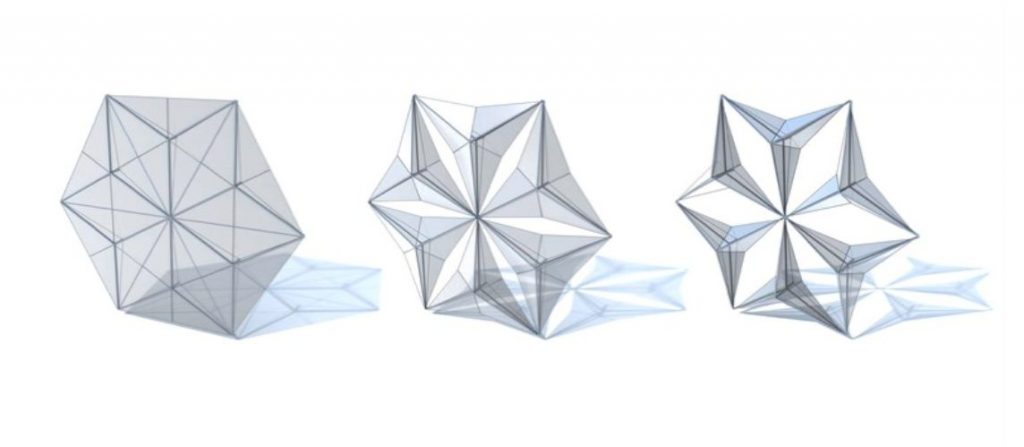Project: Al Bahar Towers (https://architizer.com/projects/al-bahr-towers/)
Abu Dhabi (Completed June 2012)

The Al Bahar Towers’ dynamic facade design drastically reduces the building’s direct solar exposure, internal heat gain, energy expenditure, and elemental damages such as sand erosion. The facade is an external curtain wall, offset from the glazing by two meters. The design of the panels is inspired by ‘mashrabiya,’ a traditional Islamic lattice shading device. At night, all the panels will open(right), and during the day, the panels will close as they follow the sun’s trajectory.

Abu Dhabi’s climate is an arid desert with only two main seasons – winter and summer- separated by two transition periods. Summer is undoubtedly the more extreme season, seeing average daytime temperatures rise to around 45C, with humidity levels at 80% to 90%. At night, the temperature drops no lower than 30C. The Al Bahar Towers’ dynamic facade currently operates on pre-calculated sun patterns and meteorological data, given that the regional climate is extreme yet stable. The same intent can be achieved by a light-sensitive or temperature-sensitive, phase-change material that responds to the change in light exposure or temperature fluctuation—making the building more adaptable to its climate and eliminating unpredictability. The design can still be in the configuration of panels, as it would be cheap and easy to produce. I envision a ballon type of material/construction of the panels, where individual ballon will inflate/deflate based on temperature or/and light to open and close.
Flexural biomimetic responsive building façade using a hybrid soft robot
actuator and fabric membrane

As the understanding of building technologies and material sciences advances, architecture also becomes amorphous and self-shaping to adapt to the ever-changing environment. The paper by Mi-jin Kim, Baek-Hyeon Kim, Je-sung Koh, and Hwang Yi investigate the affordance of bio-inspired and nature-inspired kinetic responsive facades (KRF) in architecture via an experimental study regarding soft robots. The experimental system uses a combination of rigid frames, shape memory alloy springs, and soft actuators to drive locomotion by air pressure. These operations can be controlled manually or by sensing the environment, such as light and temperature.

The facade design proposed in the research paper can be applied to the Al Bahar Tower and many other pieces of architecture. The unique form will provide visual stimulation and real-world energy-saving potentials. Combined with automated control systems, the entirety of the building facade can become a self-regulating entity that responds to its environment.